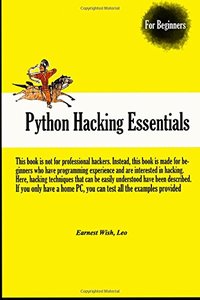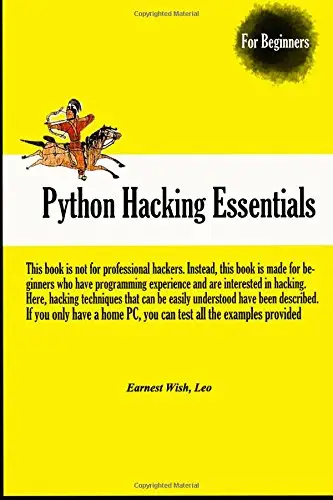Python Hacking Essentials by Earnest Wish
English | Apr 1, 2015 | ISBN: 1511797568 | 214 Pages | AZW4/PDF (True) | 17.5 MB
English | Apr 1, 2015 | ISBN: 1511797568 | 214 Pages | AZW4/PDF (True) | 17.5 MB
This book is not for professional hackers. Instead, this book is made for beginners who have programming experience and are interested in hacking. Here, hacking techniques that can be easily understood have been described. If you only have a home PC, you can test all the examples provided here. I have included many figures that are intuitively understandable rather than a litany of explanations. Therefore, it is possible to gain some practical experience while hacking, since I have only used examples that can actually be implemented. This book is therefore necessary for ordinary people who have a curiosity of hackers and are interested in computers.
Organization of the Book
This book is made up of five major parts, from basic knowledge to actual hacking code. A beginner is naturally expected to become a hacker while reading this book.
Hacking Preparation
Briefly introduce the basic Python syntax that is necessary for hacking.
Application Hacking
Introduce the basic skills to hack an application, such as Keyboard hooking, API hooking and image file hacking.
Web Hacking
The Virtual Box test environment configuration is used for a Web Shell attack to introduce web hacking, which is currently an important issue. The techniques include SQL Injection, Password Cracking, and a Web Shell Attack.
Network Hacking
A variety of tools and the Python language can be combined to support network hacking and to introduce the network hacking technique. Briefly, we introduce NMap with the Wireshark tool, and hacking techniques such as Port Scanning, Packet Sniffing, TCP SYN Flood, Slowris Attack are introduced.
System Hacking
System hacking is difficult to understand for beginners, and in this section, figures are used to introduce difficult concepts. The hacking techniques that are introduced include a Backdoor, Registry Handling, Stack Based Buffer Overflow, and SEH Based Buffer Overflow.
While reading this book, it is possible to obtain answers for such problems one by one. After reading the last chapter, you will gain the confidence to be a hacker.
Features of this book
When you start to study hacking, the most difficult task is to configure the test environment. There are many problems that need to be addressed, such as choosing from the variety in operating systems, obtaining expensive equipment and using complex technology. Such problems are too difficult to take in at once, so this book overcomes this difficulty by implementing a simple idea.
First, systems will be described as Windows-based. We are very familiar with Windows, so it is very easy to understand a description based on Windows. Since Windows, Linux, Unix, and Android are all operating systems, it is possible to expand the concepts that are discussed here.
Second, we use a virtual machine called Virtual Box. For hacking, it is necessary to connect at least three or more computers on a network. Since it is a significant investment to buy a few computers only to study these techniques, a virtual machine can be used instead to easily implement a honeypot necessary to hack by creating multiple virtual machines on a single PC.
Finally, abstract concepts are explained using figures. Rather than simply using words for descriptions, graphics are very effective in transferring information. An abstract concept can materialize through the use of graphics in order to improve the understanding on the part of the reader.



